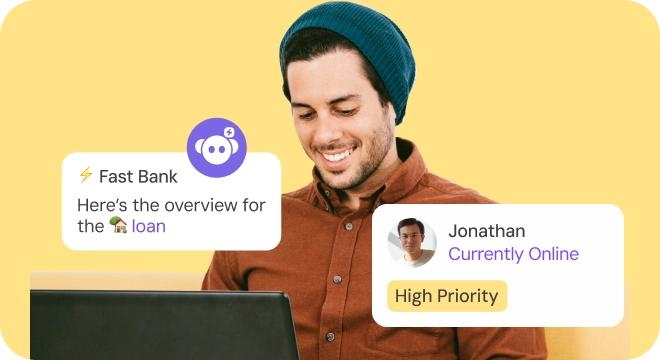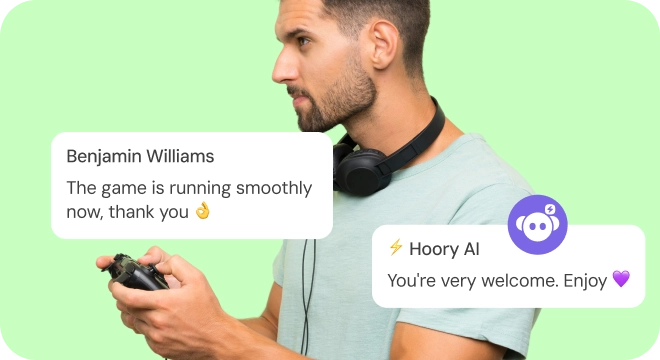What is the RICE Score? Understanding the Basics of RICE Prioritization
• Customer Support
• FastBank

If you've ever been stuck deciding which business project, feature, or idea deserves your team's focus, you know how tricky prioritization gets. Everyone's got opinions, deadlines are tight, and resources are limited. That's where the RICE score helps cut through the chaos.
What makes the RICE framework so useful is how straightforward it is. Instead of decisions up to guesswork or gut feelings, it gives you a clear, structured way to compare your options. By looking at four simple factors, it helps you figure out which tasks are really worth your time and energy.
But while RICE sharpens internal decision-making, it's not the only tool worth considering. Another valuable framework is the KANO model, which focuses on customer satisfaction and feature appeal. The RICE and KANO frameworks are interconnected in the sense that both help prioritize product features, but they focus on different aspects of decision-making and can complement each other.
In this guide, we'll break down what the RICE score is, how the RICE formula works, and why so many teams use this prioritization framework to stay focused. Whether you're working in product management or managing projects of any kind, understanding the RICE prioritization method can save you a lot of second-guessing.
What is the RICE Method?
The RICE method is a decision-making tool for prioritizing projects, ideas, or features based on four simple factors: Reach, Impact, Confidence, and Effort. This approach helps teams focus on what will deliver the most value while managing resources effectively. Now, let's take a look at each of these factors one by one:
-
Reach refers to how many people or customers a project or feature will affect within a specific time period. The more people you can reach, the higher the RICE score. This factor is crucial in the RICE framework as it helps you evaluate the scale of potential benefits. For instance, if a feature will impact a significant portion of your user base, it should likely be prioritized higher than one that affects only a small group. The broader the reach, the more it aligns with your business goals.
-
Impact measures how much a project or feature will contribute to your overall goals and how significant the impact can be. It focuses on the depth of change or improvement that a project can bring. For example, a feature that drastically boosts user satisfaction or drives significant revenue growth would score higher in RICE scoring than something with a more modest impact. The key here is understanding how strongly the project will push you toward your objectives and whether it justifies the effort required.
-
Confidence reflects how certain you are about your estimates for Reach and Impact. Since you're relying on data and assumptions, some uncertainty is inevitable. Confidence helps you account for that variability. If your data is solid and your assumptions are backed by clear evidence, the project's score will be higher, signaling a stronger case for prioritization. On the other hand, if you're uncertain about key factors, your RICE prioritization will reflect that lower confidence, adjusting your expectations accordingly.
-
Effort refers to the amount of time and resources required to complete a project. It's an essential factor in the RICE prioritization method, helping you evaluate how much work is needed to achieve the anticipated Reach and Impact. The less effort required for a high Impact, the better the project will score. Generally, projects with high Impact and low Effort are the most desirable, as they maximize value while minimizing the resources spent.
At its core, the RICE framework assesses the potential benefits and the effort required to achieve them. Instead of relying on subjective opinions or guesswork, the RICE prioritization method makes prioritization a more objective, data-driven process.
This method is especially useful for RICE product management, where decisions must be backed by solid reasoning to ensure the most valuable projects are prioritized. Teams can use the RICE model to evaluate various initiatives, whether launching new features or deciding which projects to tackle next. By systematically weighing these four factors, the RICE scoring process helps remove the uncertainty associated with prioritization.
With RICE prioritization, teams gain clarity, making it easier to focus on what will drive the most impact without spreading themselves too thin.
How to Calculate The RICE Formula?
Calculating the RICE score involves a simple formula that helps you prioritize products, projects, features, or tasks by evaluating their potential impact relative to the resources required. The RICE formula is designed to bring clarity to decision-making by weighing four key factors: Reach, Impact, Confidence, and Effort.
To calculate your RICE score, follow this straightforward formula:
RICE Score = (Reach × Impact × Confidence) / Effort
Example Calculation
Let's say the team decides between adding a live chat integration and launching a new analytics dashboard. Here's how the RICE framework compares the two.
For the live chat integration, the team estimates it will reach 1,500 users per month and significantly improve customer interaction, with an impact rating of 4. With 85% confidence in their estimates and requiring around 7 days of work (Hoory AI's live chat widget, for example, can even take less than seven days to integrate), the RICE score is:
-
Reach: You estimate it will impact 1,500 users per month.
-
Impact: You think the feature will significantly improve user engagement, so it gets a rating of 4.
-
Confidence: You're 85% confident that your assumptions are correct.
-
Effort: The project will take about a week to complete.
Plugging these values into the formula:
RICE Score = (1,500 × 4 × 0.85) / 1 = 5100
On the other hand, the new analytics dashboard is expected to reach 1000 users per month, with a moderate impact rating of 3. This feature would offer detailed insights like response times, customer satisfaction scores, and agent performance. However, Hoory AI already includes robust analytics capabilities, covering most of the features that an additional dashboard would provide. With 80% confidence in their assumptions and requiring 12 weeks to develop, the RICE score for the analytics feature is:
RICE Score = (1,000 × 3 × 0.80) / 12 = 200
As you can see, the live chat integration comes out on top with a score of 5100, making it the better choice to prioritize for maximum impact.
Interpreting RICE Scores: What's a "Good" Result?
There's no universally fixed threshold for a "good" RICE score - it's relative to the scores of other projects or features you're comparing. However, here's a general guide:
-
High RICE Scores (e.g., 300+ or significantly higher than others): Strong candidates for prioritization. These initiatives are likely to deliver substantial value with reasonable effort.
-
Mid-Range Scores (100–300): Worth consideration, but may require deeper analysis or may not be as urgent.
-
Low Scores (below 100): Typically lower-impact initiatives or high-effort tasks that might not justify the investment right now.
Conclusion
In conclusion, the RICE scoring method offers a structured and objective approach to prioritization that can help teams make smarter, data-driven decisions for their business processes. By evaluating Reach, Impact, Confidence, and Effort, the RICE framework enables you to identify which projects or features will deliver the most value while aligning with your resources and goals. Whether you're deciding which new feature to launch or assessing the effectiveness of a chatbot for eCommerce, RICE can provide clarity on the initiatives that should take precedence.
This method makes it easier to assess how each project will benefit your customers, like the chatbot benefits for customers, and how those benefits contribute to your broader business objectives. With RICE, you can prioritize tasks that drive the most significant results, ensuring your resources are spent on what truly matters.

























